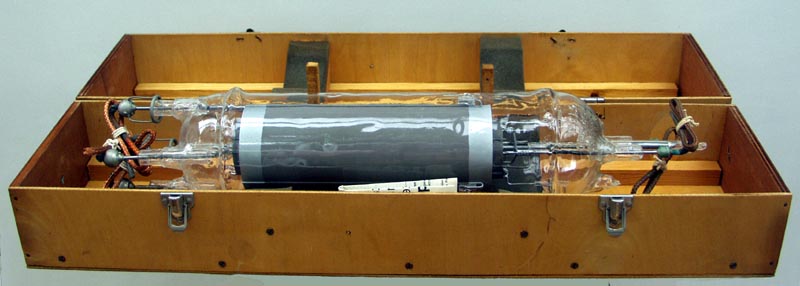|

Silica-envelope valves were a Mullard speciality from around 1918 onwards when Colonel Mullard undertook to manufacture them for the Admiralty. The special feature of silica is that it can be run much hotter than normal lamp-factory glass without conducting electricity or becoming 'lossy' in strong RF fields. As a consequence it was possible to make more powerful transmitting valves without requiring glass envelopes of impractically large dimensions. Apart from the fearsome cost of large, hand-made silica valves, the main technical problem was sealing high-current filament leads through the silica envelope. Mullard's solution was clumsy and delicate, which limited usage of such valves and lead MOV to exploit external anodes, based on the Housekeeper copper/glass seal, instead. However, there were some high-power applications where compact, air-cooled electrode assemblies were technically essential so silica valves continued to be made in small quantities.
Immediately before WWII, when the famous Chain Home (CH) radar system was being developed, a need arose to use silica valves in early versions of the transmitters. Mullards, not being British-owned and largely dependent on Philips for research and development, could not be let in on the secret so when their standard silica types proved to be not up to the job, MOV was called in to make specially uprated silica valves for a special application. Having no previous experience with Mullard production methods they had to redesign parts of the valves, including the filament seals, from scratch.
The MOV design was more compact, more efficient, more robust and, most important of all, relatively easy to make. MOV set up a Government-owned shadow factory where thousands of the new silica valves were made. Eventually, of course, the introduction of newer ceramic envelope materials, and the development of new classes of radar valve (eg. magnetrons) made silica obsolete.
|